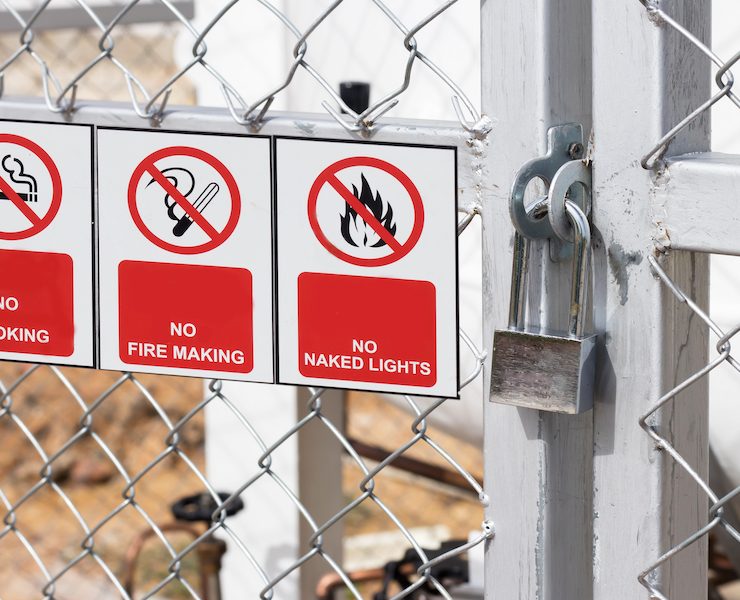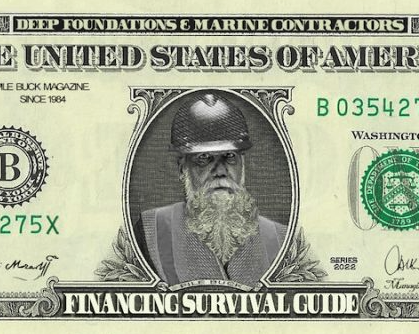The Tony Soprano Definition Of A Construction Project Submittal


Tony, the Architect on your Project, tells you, after you complain about his 9th rejection of your submittal, that:
“I ain’t going to tell you what to do. Just don’t do it unless I approve it.”
Sound familiar?
To many contractors, the whole process of submittals and shop drawings is mired in voodoo, make work, arbitrary lines in the sand bearing no engineering reasoning, and frustration. The designer, whether an engineer or architect, declines to tell you what they want — schooled by their risk management team that to do so would be interfering in the contractor’s “means and methods.” At the same time, as a contractor you suspect that there is a “right answer” lurking in all these submittal rejections. Like a game of blind man’s bluff, you continue to try to pin the tail on the donkey — you try to get the shop drawing to match the unstated criteria. By process of elimination, you eliminate all your intended means and methods, all your backups considered at bid, and do it “their way”. You are no longer Sinatra — “my way” failed. Cost, time, and early project progress all compromised, and you wonder what the job is going to be like.
I have seen in the last several years a significant increase in demands on pile contractors in terms of pile submittals, from requiring engineer stamps, drivability analyses, and considerable “design-assist” like detail. Pile driving contractors do not always have an engineer with a stamp on staff, and often have liability insurance that does not include design. But, inch by inch, these lines are getting blurred, or effort is being made to blur the lines of who is the designer and whether or not the contractor is being asked to take on design-assist or near “design build” responsibilities. And this is not just in wall thickness co-efficients, where the contractor can show a thinner but wider steel can provides the same structural value as the steel pipe pile on the plans.
With the emergence of electronic drawings these design-like demands will increase. So will they increase as cost and overhead constraints dictate the concentrated exploration of alternative materials and methods, and the design industry is more able to protect its castle from risk than contractors who invariably provide broad insurance and indemnity to the owner.
What can be done? Is this just a “grin and bear it” situation?
Let’s start with the standard, AIA definitions of submittals:
• AIA201 Sec. 3.12.4 “Shop Drawings… purpose is to demonstrate the way by which the Contractor proposes to conform to the information given and the design concept expressed in the Contract Documents for those portions of the Work for which the Contract Documents require submittals.”
• AIA Sec. 4.2.7, “The Architect will review and approve, or take other appropriate action upon, the Contractor’s submittals such as Shop Drawings, Product Data and Samples, but only for the limited purpose of checking for conformance with information given and the design concept expressed in the Contract Documents.”
• AIA201, 4.2.7, “The Architect’s review shall not constitute approval of safety precautions or, unless otherwise specifically stated by the Architect, of any construction means, methods, techniques, sequences or procedures.”
The problem here becomes obvious when you ask the project architect, be he Tony Soprano or Tony Randall, what he wants. He knows he cannot tell you, but you still need to get his approval. Sounds like you do not own your means and methods, even if the AIA documents and most specifications suggest you do. Someone has to fill in the details on the design concept, and that someone is lucky you.
In getting ready to give a seminar on the topic, I decided to examine the court cases I could find that involved a court holding that a public agency’s contracting officer or engineer unreasonably rejected a submittal. I expected to find nothing, as the whole area of submittals and shop drawings do not get into published court decisions typically, except in the other situation, where a design professional mistakenly approves a submittal, like the PVC pipe drain at the Hyatt Kansas City, that did not conform to the specifications and later led to failure and human tragedy. I expected to find nothing where a judge said the owner’s design team was unreasonable in rejecting a submittal. But, happily, I was dead wrong.
I found the case. And it’s a good one for any contractor to have in his backpocket.
The case is Waldinger Corp v. CRS Group Engineers, Inc. (7th Cir. 1985) 775 F2d 781, out of the Federal Courts in Texas, involving waste water treatment plants. The mechanical subcontractor who bid the supply of sluge dewatering equipment was unable to supply the specified equipment, and the prime contractor obtained the equipment elsewhere, and sued the original sub. The prime contractor also sued the outside engineering firm to the Sanitary District, alleging in the alternative that the engineer drafted defective specifications and interfered with the subcontract by intentionally preparing impracticable specifications and insisting without justification that the sub comply literally with those specifications.
The District Court agreed that the engineer’s specifications were excessive, and it was unreasonable in rejecting the mechanical subcontractor’s alternative equipment, and therefore, the sub was excused from literal performance of the subcontract. The evidence showed the specified equipment had not been inspected, and the reasons for its insistence, arbitrary.
What is the purpose of construction project submittals, and who is responsible for their approval?
The purpose of submittals, as defined by AIA standards, is to demonstrate how the contractor proposes to conform to the information and design concept expressed in the contract documents; their approval is the responsibility of the Architect, who checks for conformance.
Can contractors legally challenge the rejection of submittals by the project architect or engineer?
Yes, contractors can legally challenge the rejection of submittals. In the case of Waldinger Corp v. CRS Group Engineers, Inc. (7th Cir. 1985), a court found that the engineer's specifications were excessive and unreasonably rejected alternative equipment, excusing the contractor from literal performance.

















